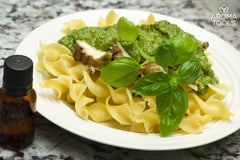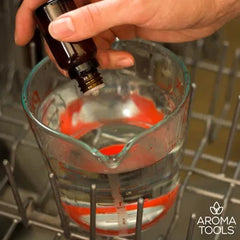Your Cart is Empty
All prices on this website are shown in USD.
Menu

0
Your Cart is Empty
All prices on this website are shown in USD.

Your Cart is Empty

Lemon essential oil (Citrus limon) is cold expressed from the rinds of the fruit. In order to get a kilo (2.2 lbs) of oil, 3,000 lemons are required.
Lemon essential oil has many uses since it has the following properties: anticancer, antidepressant, antiseptic, antifungal, antioxidant, antiviral, astringent, invigorating, refreshing, and tonic.
It is used primarily for air pollution, anxiety, atherosclerosis, bites/stings, blood pressure (regulation), brain injury, cold sores, colds (common), concentration, constipation, depression, digestion (sluggish), disinfectant, dry throat, dysentery, energizing, exhaustion, fever, flu, furniture polish, gout, greasy/oily hair, grief/sorrow, gum/grease removal, hangovers, heartburn, intestinal parasites, kidney stones, lymphatic cleansing, MRSA, overeating, pancreatitis, physical energy, postpartum depression, purification, relaxation, skin (tones), stress, throat infection, tonsillitis, uplifting, varicose veins, and water purification. See Modern Essentials for many other uses for lemon essential oil.
Historically, lemon has been used to fight food poisoning, malaria and typhoid epidemics, and scurvy. (In fact, sources say that Christopher Columbus carried lemon seeds to America—probably just the leftovers from the fruit that was eaten during the trip.)

Aromatic: Use a diffuser or put a few drops of lemon essential oil on a cloth, tissue, nasal inhaler, or the palms of your hands to breathe it in. Lemon oil promotes health, healing, physical energy, and purification when used aromatically. Its fragrance is invigorating, enhancing, and warming.
Topical: Lemon essential oil can be applied neat (with no dilution) when used topically. Apply directly on area of concern or to reflex points. Lemon oil can sensitize the skin to ultraviolet light within 12 hours of use. So exercise caution here, and avoid direct sunlight for up to 12 hours after using on skin.
Internal: Lemon essential oil can be taken internally, and it is often used as a flavoring in cooking. Put 1–2 drops of lemon oil under the tongue or in a beverage. It can also be taken in capsules.
1. Aromatic
The aroma of lemon essential oil can help you get energized in the morning—try a few drops in the corner of your shower stall to circulate with the water vapor. Lemon aroma can also help relieve anxiety or lift a depressive mood. Diffused lemon helps disinfect the air to prevent the spread of sickness, and it facilitates recovery from colds. Try diffusing lemon essential oil alone or in one of the following recipes:


Here are a few other diffuser blends that use lemon essential oil:





2. Topical

Lemon essential oil is helpful in cleansing the lymphatic system. One of the biggest signs that your lymphatic system needs cleansing is cellulite. If you have cellulite, try massaging the following oil blend over affected areas before doing aerobic exercise.
Cellulite Reduction Massage
5 drops rosemary
5 drops ginger
5 drops coriander
5 drops lemon
4 tsp. carrier oil such as fractionated coconut oil, coconut oil, or jojoba oil
3. Internal and Food Recipes
Add a drop of lemon oil to a teaspoon of honey for internal sore throat relief. Put a few drops in a glass or metal water bottle, shake, and drink—this purifies the water and aids digestion and detoxification. (The citric acid in lemon may break down some plastic water bottles.) Add several drops to a bowl of water for washing fruits and vegetables before food preparation, or use this produce spray.
Lemon essential oil is easy to add to your favorite recipes. Just substitute 1 drop of lemon oil for 1 tsp. of lemon zest. Here are a few of our favorite recipes to help you get started:


















4. Household Cleaning Products
Lemon oil is a natural replacement for many disinfecting cleaning products that may contain harmful chemicals. Neutralize odors in the air with several drops of lemon in a spray water bottle. (Shake frequently during use or use this emulsifier to help mix the oil and water.) Use that same spray bottle to clean and disinfect countertops, cutting boards, and fixtures. Add a few drops of lemon to the dishwasher, washing machine, or dryer to deodorize. Remove adhesives, grease, or gum from hands, hair, and other surfaces. Try using lemon oil with these cleaning recipes:








5. Body Care Products
Because lemon essential oil is known to be antiseptic, antifungal, and antiviral, it is great to add to body care products such as hand sanitizer, breath spray, and soap. Try using lemon oil in the following recipes:


Sources:
Modern Essentials : A Contemporary Guide to the Therapeutic Use of Essential Oils, 8th Edition, pp. 81–82.
: A Contemporary Guide to the Therapeutic Use of Essential Oils, 8th Edition, pp. 81–82.
Healing Oils: 500 Formulas for Aromatherapy by Carol Schiller & David Schiller
Comments will be approved before showing up.

As you’ve been inspired by others’ success, you can more accurately see the next step in your upward journey. Confidently take that step! In this blend, fennel inspires courage to move forward. Pink pepper helps increase alertness and focus. Marjoram promotes patience and peace along the way. Sandalwood calms and balances the effects of the other oils.

Looking for a DIY holiday gift that’s easy, affordable, and on trend? Look no further than the “12 Sprays of Christmas” labels. They come with a downloadable recipe sheet of the blends as one of our holiday gifts to you.

Looking for a warm, woodsy autumn blend for your diffuser? Autumn Leaves is a delightful way to welcome the new season! The fresh, sweet aromas of bergamot and ginger harmonize with the warm, rich touches of frankincense and ginger. Together, these essential oils promote energy and awareness and help relieve tension.
We love sharing tips and tricks on how to safely and effectively use essential oils. Join in on the conversation!
10 Diffuser Blends for the Road
Essential Oils for Heart Health & Cardiovascular Support
Lighten Your Hair Naturally with Essential Oils
Essential Oil Gummy Candies for Immune Support
Essential Oil Spotlight: Blue Lotus
Men's Cologne with Essential Oils
The Art of Roller Bottle Blending
Keys to Successful Essential Oil Classes (Including 50+ Class Ideas)
Sign up for our newsletter to learn about releases, exclusive deals and more!